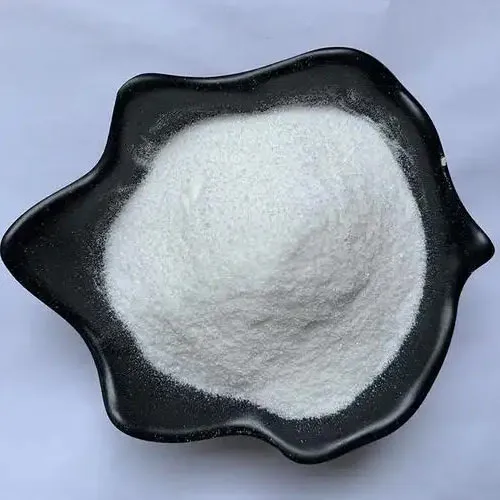
High Substituted Hydroxypropyl Cellulose | High Purity Binder
High Substituted Hydroxypropyl Cellulose: a practical insider’s guide
If you work in pharma coatings, waterborne inks, or even premium hair gels, you’ve likely crossed paths with High Substituted Hydroxypropyl Cellulose. I’ve spent the last quarter chatting with formulation teams and—yes—poking around mixing rooms. The consensus? When you need clean rheology control and solvent compatibility without drama, this cellulose ether quietly does the heavy lifting.

What it is and why it’s trending
Technically, it’s cellulose etherified with hydroxypropyl groups to a high substitution level (MS around 3.0–4.0). That gives it water solubility, thermoplasticity, and surprisingly good alcohol tolerance. Trends? Low-VOC systems, cleaner labels, and robust film formation in tablets and inks. And, to be honest, customers keep asking for tighter particle-size control to speed up wet-out in high-shear mixers.
Typical specs (real-world use may vary)
| Parameter | Typical Value/Range | Standard/Test |
|---|---|---|
| Hydroxypropoxy content | ≈ 56–80% w/w | USP–NF/EP |
| Molar substitution (MS) | ≈ 3.0–4.0 | USP–NF |
| Viscosity grades (2% aq., 20°C) | 5–4000 mPa·s (Brookfield) | Brookfield LV/EP 2.2.10 |
| Moisture (LOD) | ≤ 5.0% | USP |
| pH (1% sol.) | 5.0–8.0 | USP |
| Particle size | 80–120 mesh options | Sieve analysis |
Where it’s used
- Pharmaceuticals: tablet binder, film coating, matrix for modified release.
- Personal care: clear gels, styling products, serums (nice slip, low tack).
- Inks & coatings: waterborne rheology, leveling, alcohol-compatible systems.
- Construction & ceramics: green strength, water retention, extrusion aids.
How it’s made (simplified process flow)
- Materials: purified cellulose, alkali (NaOH), propylene oxide, aqueous/alcoholic medium.
- Etherification: controlled reaction to achieve high MS; temperature and pressure tuned.
- Neutralization & washing: remove salts/by-products; repeated solvent exchange.
- Drying & milling: low-temp drying; hammer/pin milling; sieving to spec.
- QC testing: viscosity, MS, hydroxypropoxy %, moisture, ash, impurity profile, heavy metals.
- Packaging: moisture-barrier bags, lot traceability; typically 25 kg.

Case notes (from the field)
A mid-size tablet coater reported 18–22% faster pan cycles after switching to a lower-vis grade of High Substituted Hydroxypropyl Cellulose—same solids, better atomization. In waterborne flexo inks, a 0.6% addition stabilized viscosity drift over 72 hours (Δ ≤ 7%), which the press team loved.
Vendor snapshot (quick comparison)
| Vendor | Certs | Lead time | Customization | Typical price/kg |
|---|---|---|---|---|
| Tangzhi (Hebei, CN) | ISO 9001/14001; pharma grades | ≈ 2–4 weeks | Viscosity, PSD, MS tuning | ≈ $6–$12 (volume-dependent) |
| GlobalChem Polymers | ISO 9001; food-grade options | 3–6 weeks | Standard grades only | ≈ $7–$14 |
| PharmaCo Additives | GMP aligned; DMF on request | 4–8 weeks | Tight spec pharma lots | ≈ $10–$18 |
Standards, testing, and shelf life
Conforms to USP–NF/EP/JP monographs for Hydroxypropyl Cellulose; check IID if you’re in regulated dosage forms. Routine tests: viscosity (Brookfield), MS, hydroxypropoxy %, LOD, pH, ash, heavy metals/elemental impurities (ICH Q3D), microbiological quality for pharma. Shelf life: typically 24 months in original moisture-barrier packaging; store cool and dry.
Customization pointers
- Viscosity grade to hit target KU/cP in your system.
- Particle size for faster dissolution vs. dust control (I’d ask for 100 mesh for rapid wet-out).
- Substitution window (MS) to balance water/alcohol solubility and film strength.
Origin: Room 2308, Dongsheng Plaza 2, No. 508 Zhongshan East Road, Chang’an District, Shijiazhuang, Hebei, China.
References
- USP–NF Monograph: Hydroxypropyl Cellulose. United States Pharmacopeia. https://www.uspnf.com/
- FDA Inactive Ingredient Database (IID) – Hydroxypropyl Cellulose. https://www.accessdata.fda.gov/scripts/cder/iig/
- EFSA Panel on Food Additives: Cellulose Ethers (E 461–466) re-evaluation. https://www.efsa.europa.eu/en/efsajournal/pub/4666
- ICH Q3D (R2) on Elemental Impurities. https://www.ich.org/page/quality-guidelines
-
Reliable Powdered Cellulose Supplier: Quality, Sustainability & InnovationNewsNov.24,2025
-
Find Trusted Microfibrillated Cellulose Suppliers for Sustainable Industrial SolutionsNewsNov.24,2025
-
Leading Methocel Suppliers: Quality, Innovation & Sustainability in Methylcellulose SupplyNewsNov.23,2025
-
Reliable Hydroxyethylcellulose Suppliers for Industry & Sustainability | Tangzhi HPMCNewsNov.23,2025
-
Top Ethyl Cellulose Supplier – Quality, Sustainability, and Industrial SupportNewsNov.23,2025
-
Trusted CMC Powder Suppliers for Food, Pharma & Industrial Use | Tangzhi HPMCNewsNov.22,2025





















